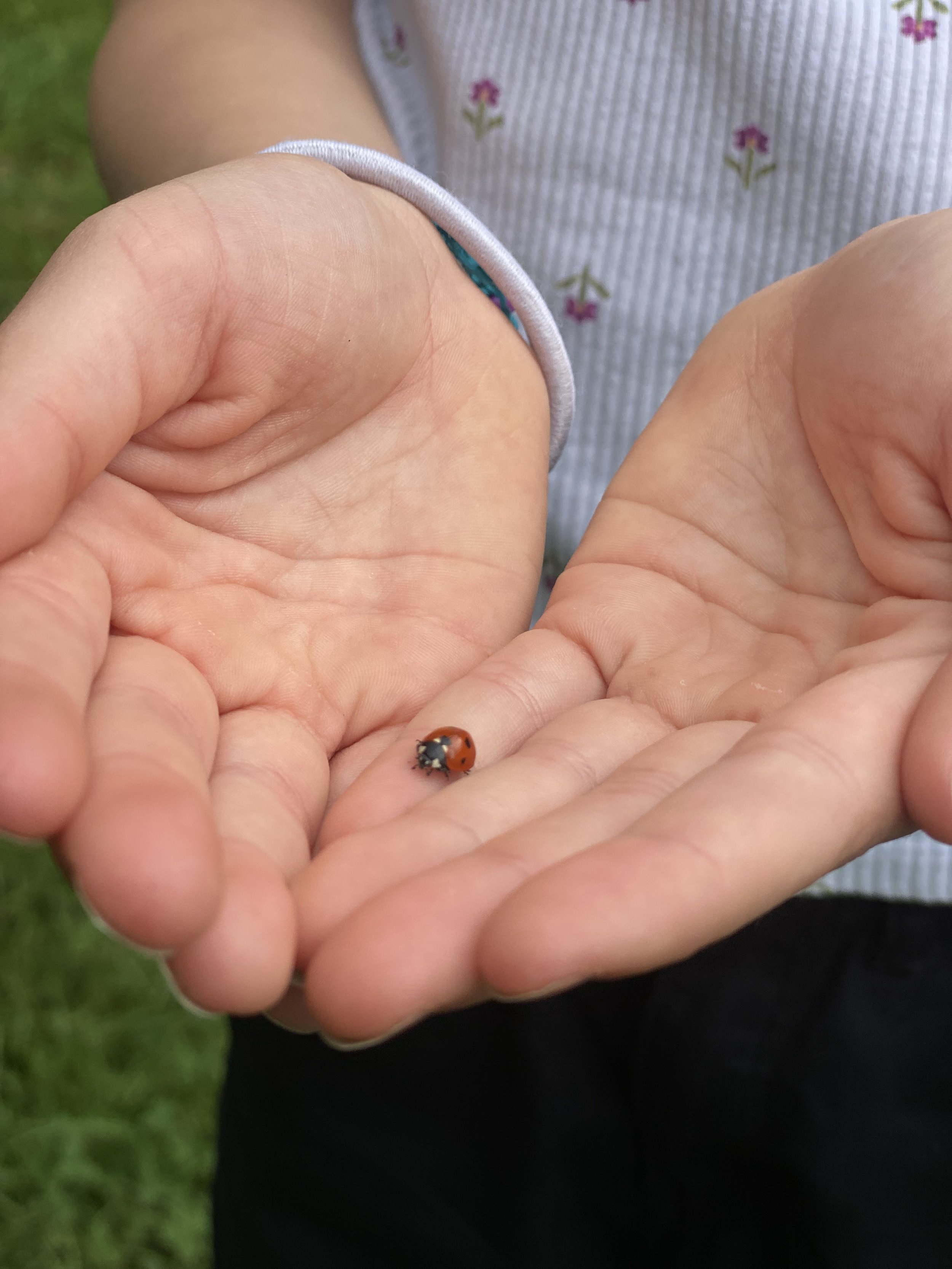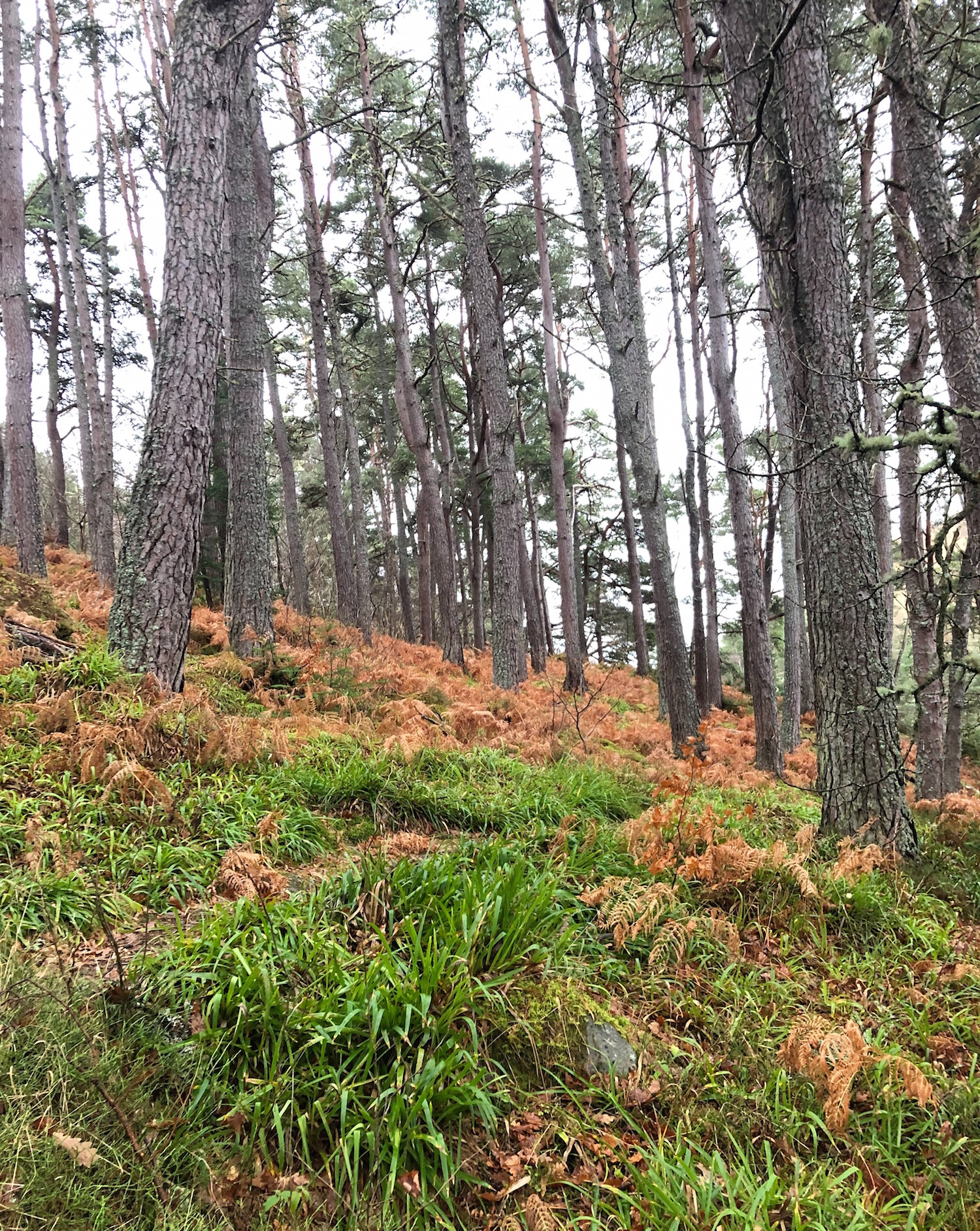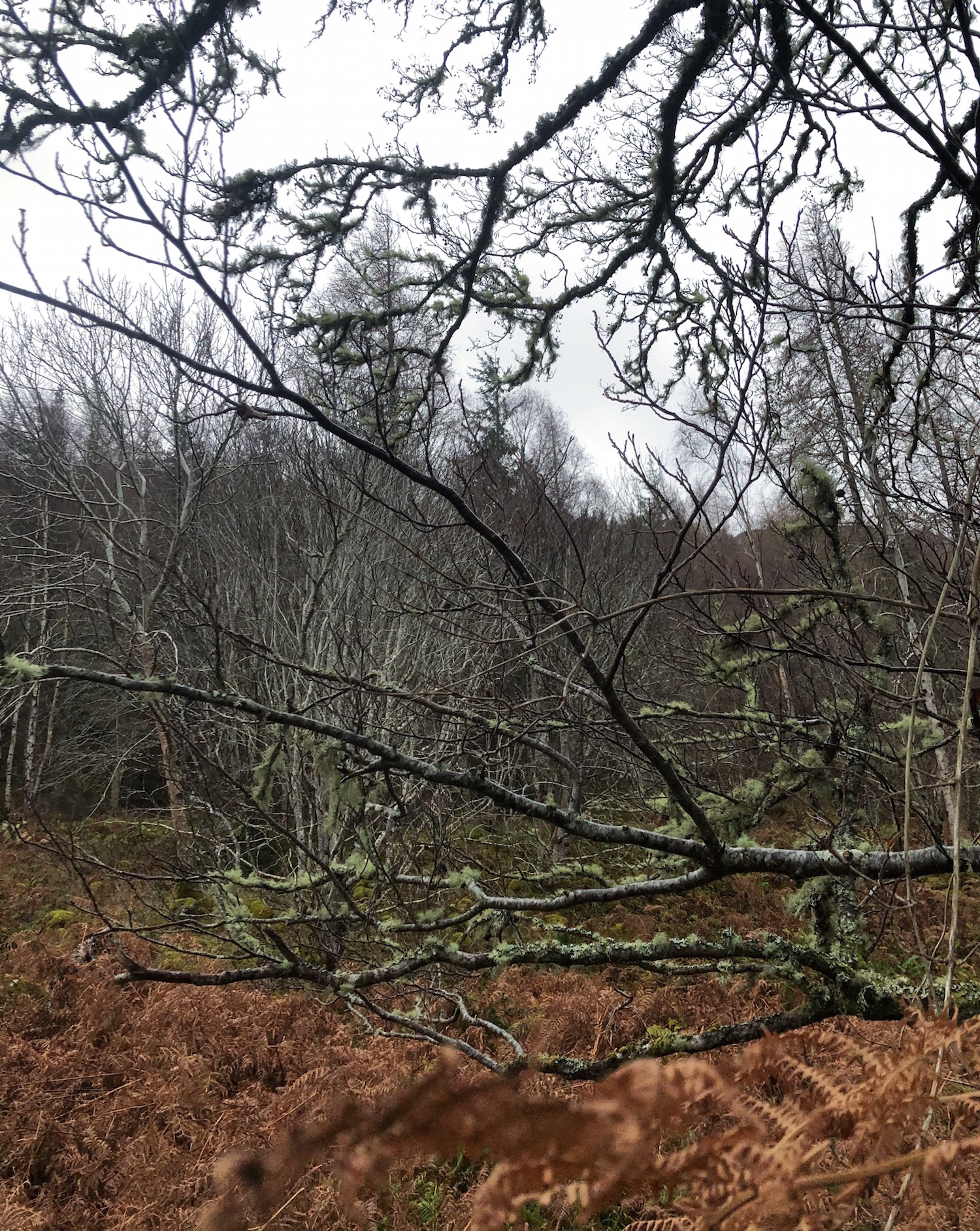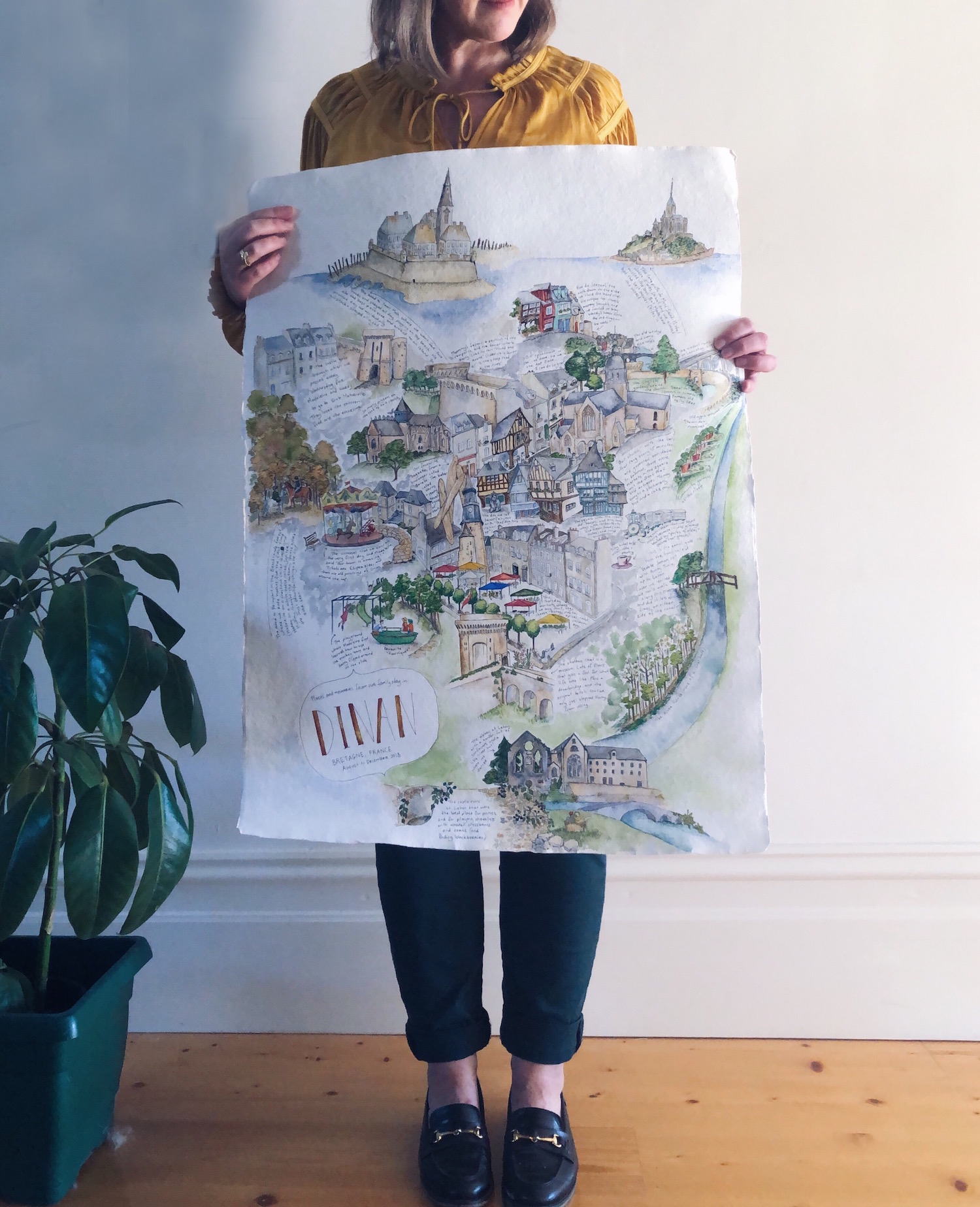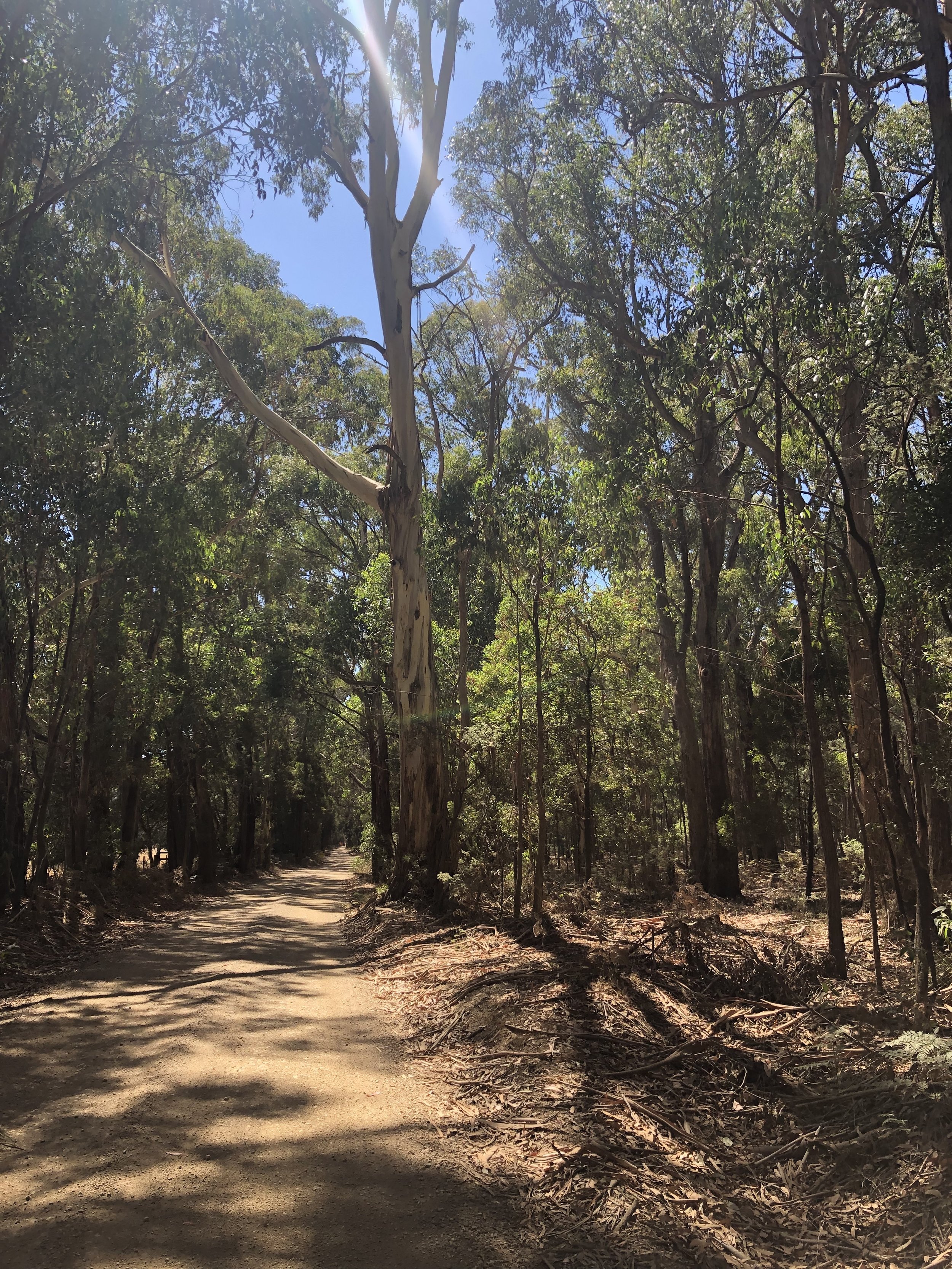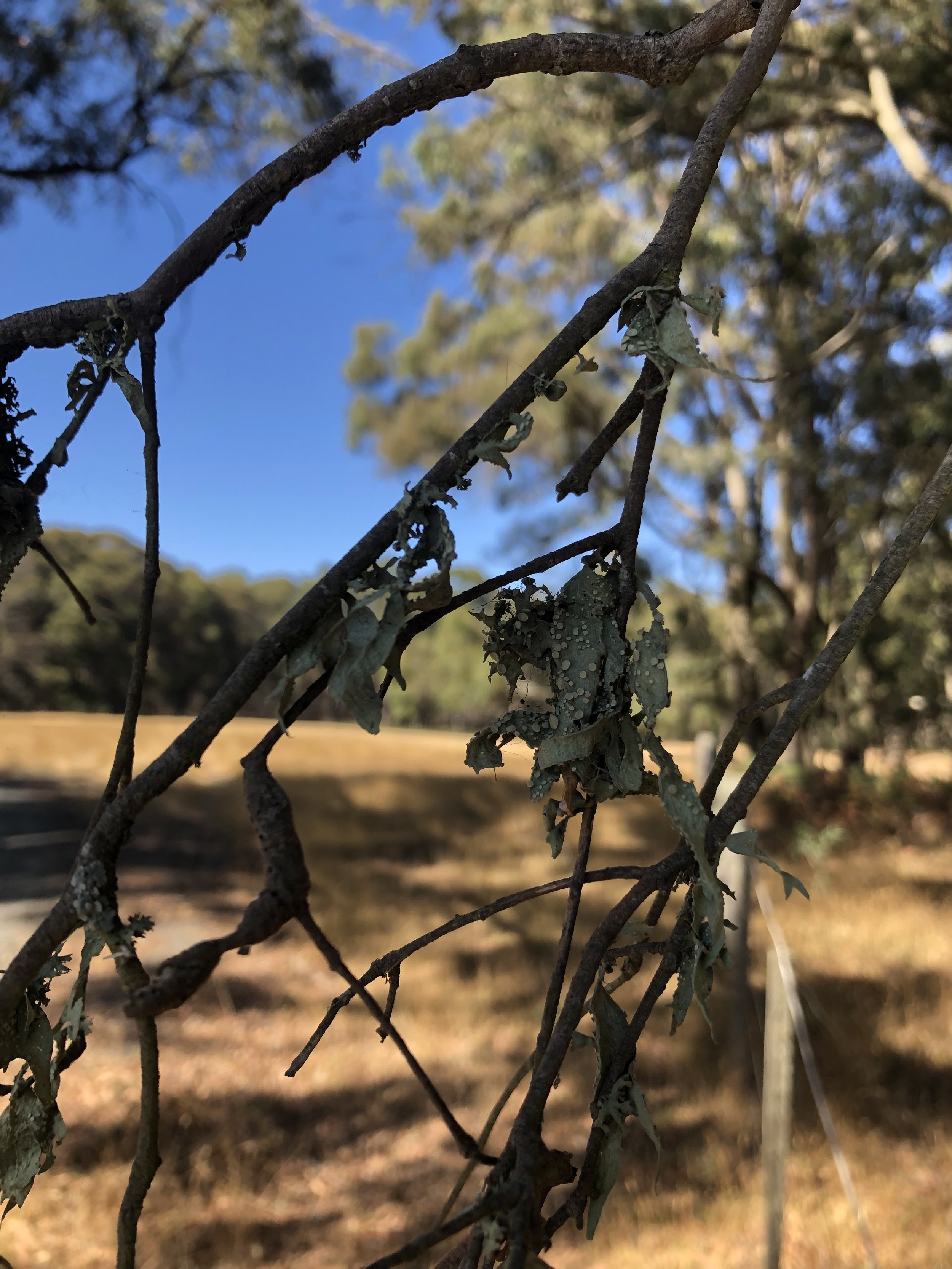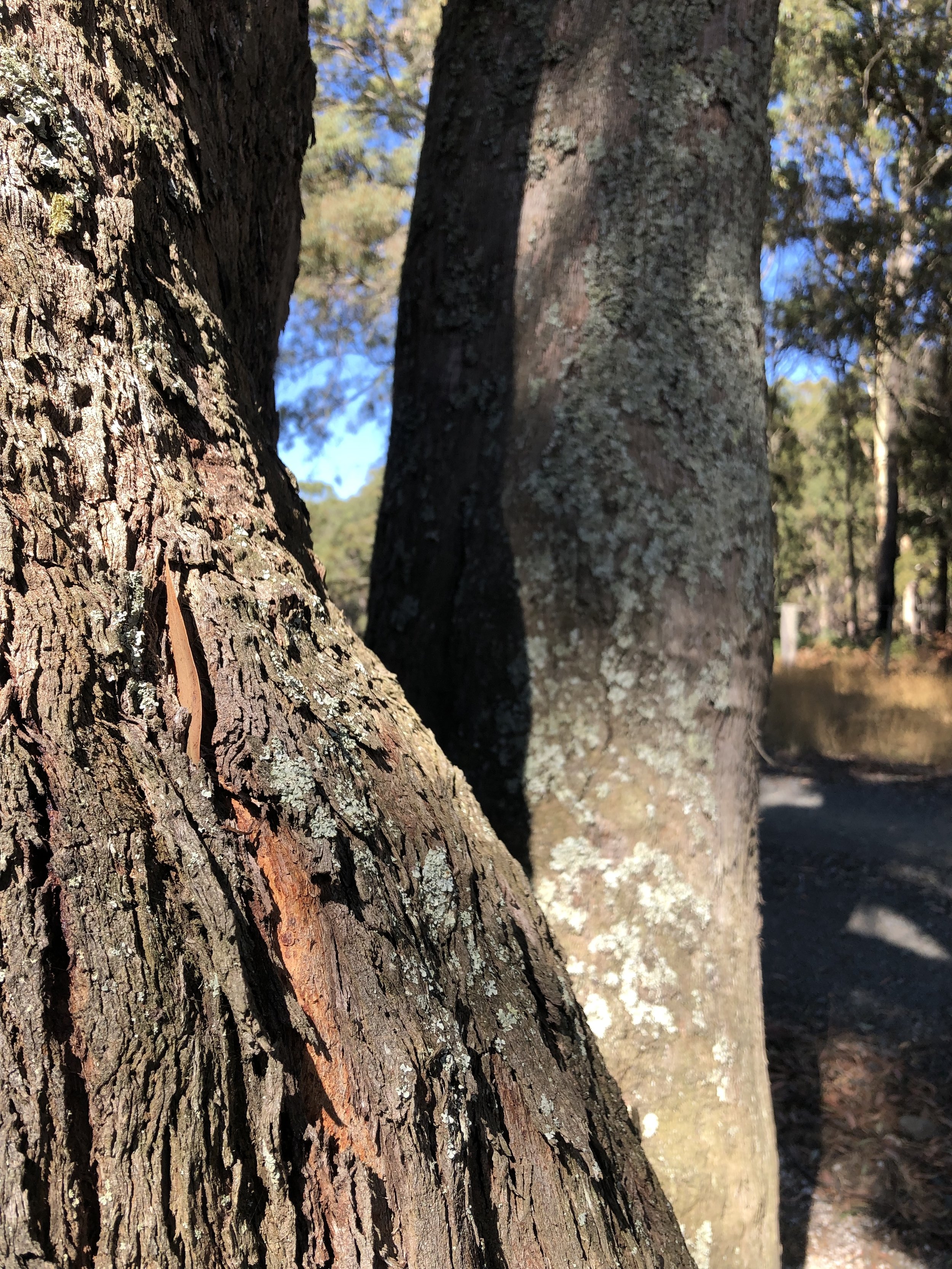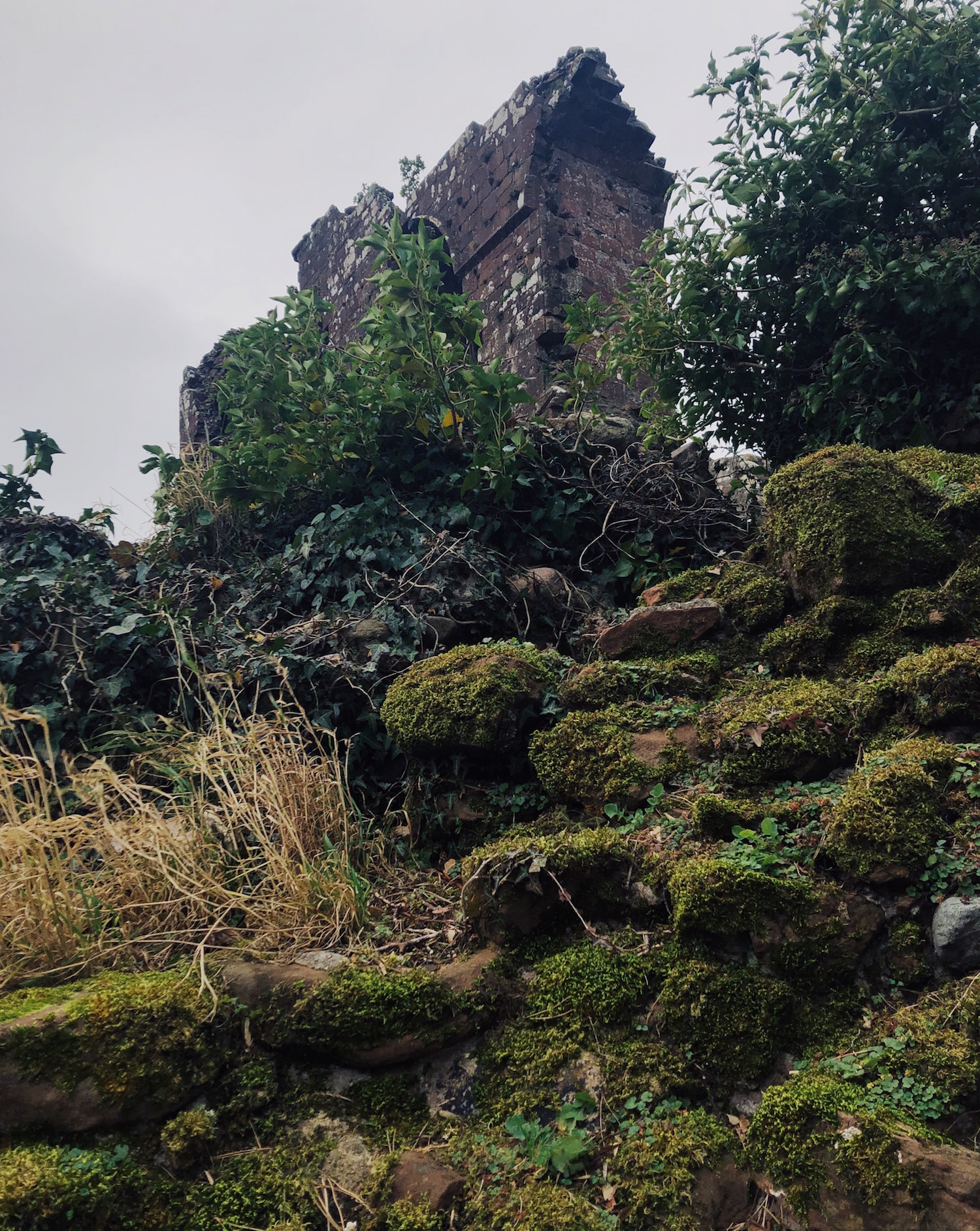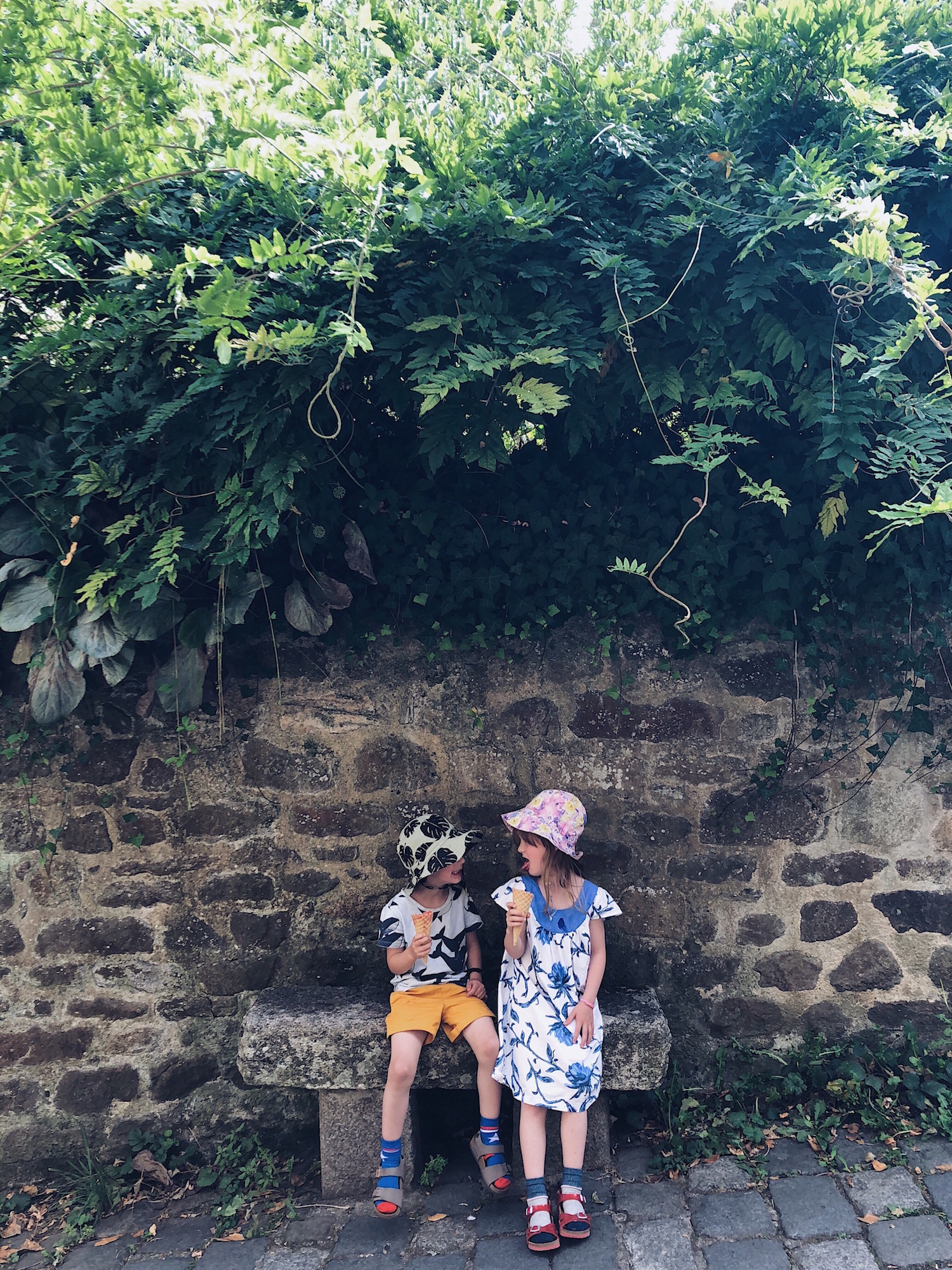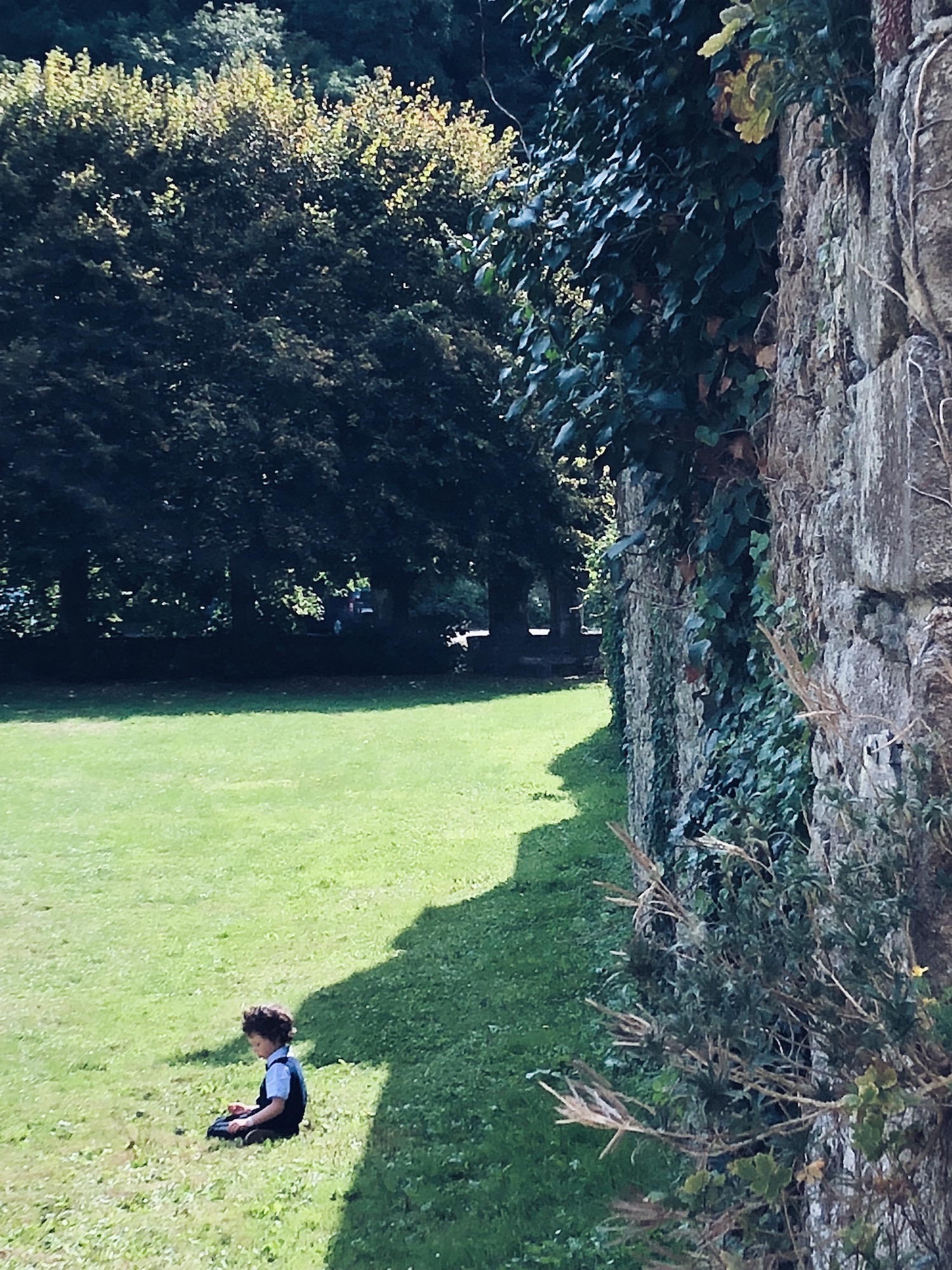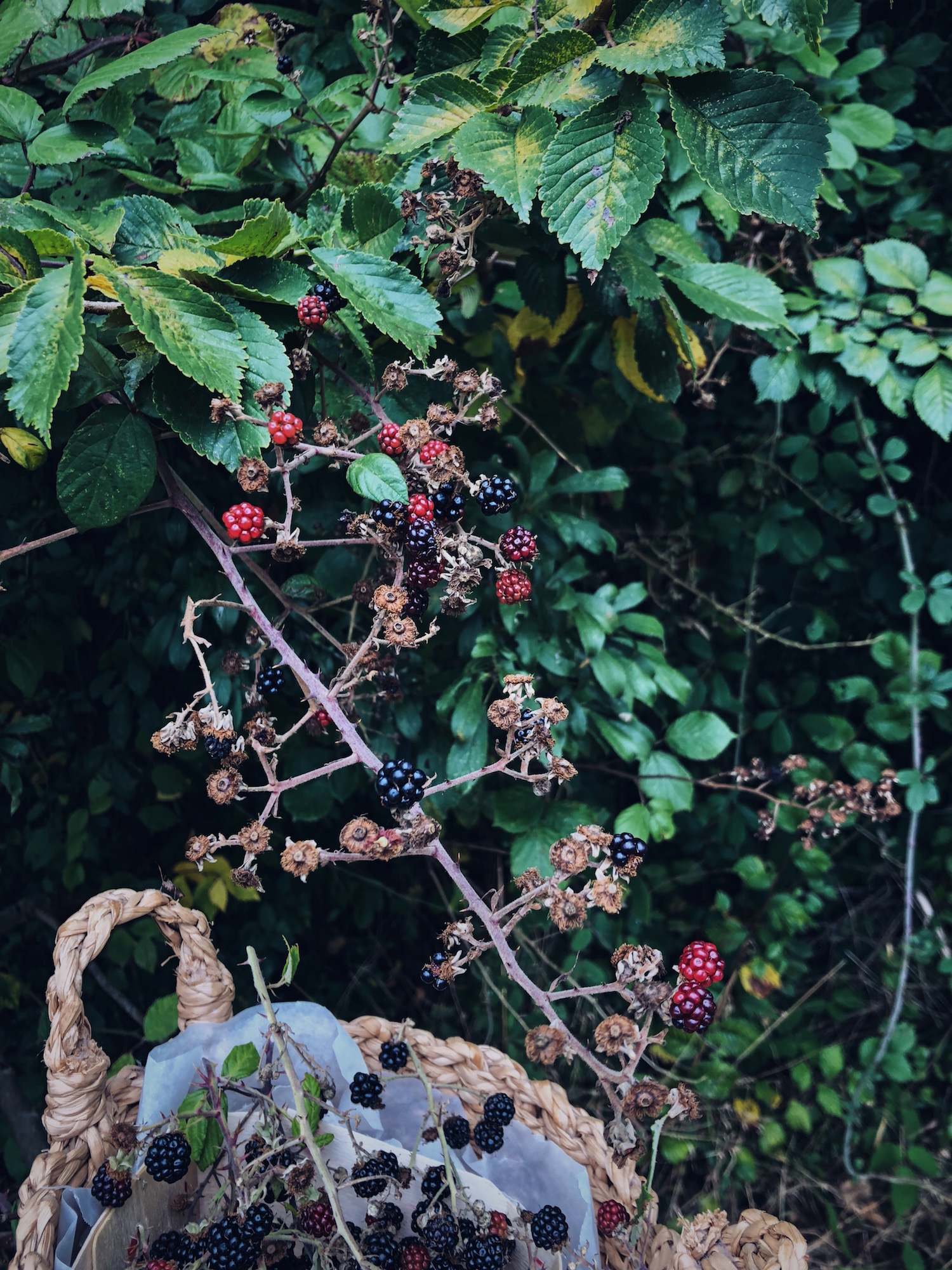
JOURNAL
documenting
&
discovering joyful things
Misty-headed
I don’t know if I can still write. Writing requires at least a modicum of free headspace, small pockets of time that can be carved out of busy schedules. To create something new necessitates thinking and reflecting and pondering and appreciating, all of which have felt about as futile as wobbly jelly, carried in my bare hands. I am misty-headed.
I intended to start a book this year, but I only got a short way in before Life - in the form of parenting, a new full-time job, a home renovation, a house-guest who stayed seven months, and an unexpected and forced move out of home that lasted six months - declared it had other plans. I haven’t given it up though. It’s a book I began thinking about during Lockdown, because Lockdown was when my husband and I turned into our parents.
We entered the Covid Years reading intellectual, philosophical, literary fiction and political biographies, and entertaining ourselves in the downtime with over-the-top, fantastical television like Game of Thrones, Vikings, and The Last Kingdom. We emerged on the other side of Lockdown reading stories about old women in department stores and tea-rooms, and biographies of gardeners, and having watched our way through the entire back catalogues of Antiques Roadshow and Father Brown.
No longer did I want to write anything challenging, anything troubling, or anything world-changing. After Covid, all I wanted to write were stories that inspired gentle happiness.
So I began plotting out a cosy mystery about the loveable members of a guerrilla-gardening club in a historic part of Melbourne, who may or may not be hiding nefarious secrets, which would be uncovered by the hapless new owners of one of the centuries-old houses in the neighbourhood. If you can imagine a story that combines historic-home renovation with quirky characters, beautiful Melbourne, a community garden, and a mystery or two to be solved, then that’s the book I’m writing. But I’m only short way in, because, Life.
We are in Bath. We arrived yesterday, and already I am, predictably, in love. There are three dove-grey Persephone books on the kitchen table of our Air BnB, I have blisters on my toes from walking 20 kilometres through town and up around the Bath Skyline, and the children are playing a game they created called “Regency Bingo,” counting the number of people we can spot who are dressed up a la Jane Austen (the current tally is 24).
I want to tell you all about it, but it seems I have forgotten how to write. You don’t want to hear me say “We went there,” and “We did this,” I’m sure. I have forgotten how to tell you the deeper stories underneath the places, the small moments that mean something, the funny anecdotes, the connections we make, and the ways that travel has changed us.
Those things are still happening on the inside, but I don’t know how to write them any more. My words are wobbly and rusty, like an old man who discovers a cobwebby bicycle behind the shed and decides to ride it six blocks to the milk bar, after decades of only walking.
Give me time. I will keep peddling.
And in the meantime, let’s take a stroll around Bath.
(The photograph above is of a “dream house” we came upon after emerging from a remote field. You may have to zoom in to see it. When I win the lottery you may find me here, writing and painting.)
100 Scottish words for rain
I heard recently that there were more than 100 Scottish words for rain.
Musical, melodic words like spindrift (spray whipped up by the wind) and aftak (an easing or lull in a storm or rain). Hilarious, fun-to-say words that you’d swear were made up, like drookit (absolutely drenched) and daggle (to fall in torrents).
And words that seem to be plucked straight out of a Scottish novel, transporting you through time and space to a place where “wild” still holds meaning, and ghosts in tartan haunt your imaginings. Yillen (a shower of rain, especially with wind), uplowsin (heaving rain), smirr (a fine rain drizzle), and goselet (a soaking, drenching, downpour).
The day we hiked to the falls that tumbled into Loch Ness, rain settled in a smirr only ten minutes after we’d started out. But walking through it was not a misery, but a joy. Ralph was fairly sure he had spotted the Lach Ness Monster (“or maybe it was a turtle head”) in the cold waters, and we watched the tiny waves through the trees and raindrops for signs of monsters, dinosaurs or turtles.
When we reached them the roar of the falls, swelled by melting snow, was almost primal. We had to shout to be heard but still the wind snatched our words and swept them into the spindrift before hurtling them into the lake below.
I bent my body into the wind and stood on the platform overlooking the brutal, yellow torrent, inside the spray. What is the Scottish word for rain that falls up, not down? The spray lashed my face and I was drookit in seconds, dripping and frozen and truly, joyfully alive.
There is a tiny drop of Scottish blood in me, on my mother’s side. My great-grandmother was born in Scotland, with the surname Calder. Calder is a highland clan that once was powerful up near Inverness. It doesn’t have a chieftain any more, but it does still have a motto:
“Be mindful.”
The time spent navigating memories
It’s a slow process. I don’t just mean the making of the #100DaysInDinan project: combing through old photographs for inspiration, sketching a rough idea onto my antique postcards, going over it in pen, painting it. Then finding old pages from magazines, tracing onto them around the envelopes that had held the postcards for a century, folding them into place, then copying addresses onto paper and pasting them onto the front of the envelopes…
All this takes time, and perhaps in retrospect one a day was too ambitious.
But the real time is spent navigating memories. As I paint I walk my memories like I walked those old, cobblestoned streets, a hundred times over, during the 100 days we lived in Dinan.
As I sketch the outline of a fresh baguette, I am back there again, standing outside Boulangerie Banette with my children, tearing the still-warm loaf into into smaller pieces to share, and the smell is the best in the world: nutty, malty, a hug.
Scout announces, “I can’t go a single day in the world without this bread,” and from that day on, our baker Mohommed keeps one or two baguettes aside for us - and often throws in some free croissants and Nutella crepes - in case they sell out before we get there (which they often do).
Now as I paint I am climbing the steep hill to the castle ruins in the village next door and I can feel the muscles in my legs burning all over again. (And oh! That wicker picnic basket is heavy! Why did I think a picnic blanket was necessary? And did we really need that much water?).
My memories tumble onwards, gaining momentum like my children rolling down a steep and grassy hill on a sunny day, squealing with laughter. I think about the friendly grey cat at the ruins that had so enchanted Ralph. He sat among the wildflowers inside the crumbling castle walls and patted the wild cat while it purred like a tractor, and I dug into the bottom of that heavy wicker picnic basket for the hand sanitiser I was sure I’d packed somewhere. We learned that French cats don’t much mind if your French is somewhat lacking.
I paint my feet in canvas shoes, dangling over the canal on a quiet jetty. As I do it, I taste again the honey and walnut cake I’d baked the day before, and carried with us on our walk. I remember throwing crumbs for ducks that wouldn’t come, and watching the tiny bubbles and rings in the water made by unseen fish coming up to feed.
On comes the summer’s day we spent in nearby Saint Malo, digging and splashing in the beach all day and then running the whole three kilometres back to the bus stop just in time for the last bus home… only to discover the timetable had changed the day before, and we were trapped. So we trudged the three kilometres back into town and found a little hotel. We ate bananas dunked in yoghurt for dinner and it was hot, so hot, so we all slept in our underwear on a big bed. I left the window open all night and watched the moon rise slowly over slate rooftops and terra cotta chimney pots as my children slept.
It slows me. I start with an anecdote but all too soon I am lost in a fully-fledged memory, and follow that path deeper and deeper into the wilds of nostalgia.
It washes over me, a longing to be back inside those slower days once more. I was mindful then, truly mindful, consciously taking in everything: watching it, feeling it, tasting it, and appreciating it. Committing it to memory as best I could, not wanting to miss a thing, not wanting to lose any of it.
So when I paint and I am slow, I don’t mind. A hundred memories is taking me more than a hundred days to record, but this project has become exactly what it set out to be: a process in gratitude.
Sustainable travel
I’m sorry.
I’m going to apologise to you, first, but then also to the planet. Because the truth is that as much as I tried to be mindful and sustainable while we were travelling as a family last year, I failed more often than I succeeded, and I suspect I could have tried so much harder.
I realise this confession is not very helpful, especially if you happen to have opened this post in the hopes of finding tips for sustainable travel (perhaps we could brainstorm ideas together?). But I think confessions are an important. I fail all too often when it comes to taking care of the world we live in, and I think it’s important to own my failures, and to let myself feel the shame rather than sweep it under the carpet, so that I can do better next time.
Also, maybe if you sometimes feel that everyone else is a zero-waste champion, carrying around a year’s worth of waste in a single mason jar while you forgot to bring the reusable bags to the supermarket last week… my confession might help you feel a little bit better, and perhaps a little less alone. We have a better chance of success if we support one another.
(A bit of context: we were on holidays for one month. There were five of us, three adults and two children, making our way from Dinan in France to Scotland, via Paris and London, staying in Air BnB homes along the way. Our time in the village hadn’t been a brilliant success at sustainability (I shared some of our experiences and ideas here), but it turns out that life on the road can make things a lot more difficult.)
Things that did work well
First, the positives. There were some things I did that worked really well, making life easy and practical for us on the road while also going a small way towards minimising our footprint. They included:
We used public transport as much as possible. From the time we left Australia in August to our return at the New Year, we took trains and buses almost everywhere. We only hired a car for one week, in order to travel in the Scottish highlands, and only took a taxi on one late night in London, and two extremely early (one of them 4am) mornings
I packed three beeswax wraps of varying sizes when we left for our trip, and used them to cover just about anything. They were especially useful in Dinan, but also came in handy when, for example, we wanted to transport a half-eaten cucumber from one Air BnB home to another, without using plastic wrap or take-away plastic boxes
I had also packed a square, collapsible, insulated lunch bag. Again, back in Dinan this was great for carrying cold things home from the market, but it was also handy once we hit the road, not only carrying food from the shops but also storing it and taking it with us from one place to another, rather than throwing things away
I bought some tourist-style biscuit tins. I love to use tins at home for storage, but they were also very helpful while we were travelling, slotting and stacking neatly in my suitcase, and carrying everything from food to stationery supplies to first aid. (Clearly I had already eaten the biscuits. I did it for the planet)
I packed two heat-proof drink-bottles with me when we first left Australia. One was glass and I accidentally smashed it in a ceramic sink in our London B&B, but the other was wood with metal insulation, and is still going strong. I’d fill this with water before leaving from the day, so that we didn’t need to buy plastic bottles of water
I packed two tote bags for carrying groceries, and bought a couple more when I needed them. I also wore a back pack every day (this one), rather than carrying a handbag. It could expand to create a surprisingly big space, and I’ve carried full-sized blankets in it, bottles of milk and wine, stacks of books, and secretly-stashed Christmas presents. Mostly I was pretty good at bringing bags with me, even for things like Christmas shopping. I think we used three or four plastic bags in total in the month we travelled, and those I saved to use as garbage bags in our B&Bs
Things we really should have done better
I didn’t bring a reusable coffee cup. In France, this didn’t matter. I drank tea at home and coffee in cafes and, knowing this would be the case, I just didn’t add it to the luggage I was packing. But in London and Scotland, often my husband would go out early while I was getting the kids dressed, and bring back two coffees and the newspaper to read. It was so nice to have a ‘proper’ latte after all that time that my conscience grew weak.
Lesson: I should have said “no thanks.” Or waited until I could leave, too, and had the coffee in the cafe. I did sometimes, but mostly I didn’t, and I’m sorry.
I took a big bag of soap nuts with me when we first went to Dinan, and used them for several months. But then the ancient washing machine in our rented apartment tore apart the little muslin bag I used for them (as well as several items of my clothing). I didn’t know how to replace it, so I had to buy ordinary laundry powder to use on the road. I tried to find earth-friendly detergent but still ended up with a kind of contact-dermatitis on my legs and torso, which doesn’t bode well for the waters it drained into.
Lesson: I’m not sure. Learn how to sew my own little muslin bags? There’s no way I could have carried a month’s worth of clean clothes for five people travelling in winter. Can you help? What would you have done?
I used traditional Christmas wrapping paper, even though I knew it probably couldn’t be recycled. There was a lot of angst around this (for me) and in the end, I chose paper because a) by the time we arrived in Edinburgh, where we’d be for Christmas, we only had two days left to organise everything, b) I couldn’t find brown paper and didn’t have time to decorate it anyway, c) my husband doesn’t like furoshiki wraps because he thinks they don’t get used, and anyway I couldn’t afford to buy enough for all the presents, d) the children didn’t have Santa stockings or sacks, so I wanted to create some kind of ‘unwrapping’ experience for them, and e) we didn’t have a tree or much in the way of decorations, so the other adults travelling with me quite rightly felt a bit of festivity was in order.
I didn’t want to be the wowser in the group, and perhaps by this point was feeling a bit (or a lot) hypocritical about pushing the issue, given all the other slip-ups and outright failures we’d been making along the way. It’s hard to be vigilant about recyclable wrapping-paper while sipping coffee from your take-away cup.Lesson: In retrospect, the smartest thing would probably have been to bring two stockings or sacks for the kids, so that the Santa presents didn’t need wrapping, and then to use a combination of cloth, tea-towels, ribbons and other ideas for our presents to one another. Also, I’m going to teach myself how to properly use furoshiki wraps, so by next year, my husband might accede to their usefulness.
Food waste and recycling was tricky. I did manage to sort-of minimise our food waste, but we were limited in terms of recycling options, depending on the rules of each home we stayed in. I’ve written before about the challenges of not bringing things in, rather than figuring out what to do with the things on the way out, but I don’t think I was particularly good at this, especially once we hit the road.
Lesson: Really, there’s not a lot you can do in these situations, other than to be mindful of what you bring in, and I just needed to be more vigilant in that respect. It’s a lot harder to cook at home while on holidays, and can sometimes be counter-intuitive (the amount of ‘things’ we’d need to buy for just one meal in terms of food ingredients that wouldn’t get fully eaten, and all the jars, tins and plastic they come in, would possibly be more wasteful than a single take-away pizza box or plastic container), so I guess the answer is to think hard and creatively about what comes in, every time.
Air travel. This is the giant, white elephant in the room when it comes to sustainable travel. Here we are as ‘responsible’ human beings, travelling with our keep-cups and tote bags, while just to get where we want to go, we are participating in an industry that is responsible for more than 2 percent of the entire world’s carbon dioxide emissions by burning finite fossil fuels, emitting greenhouse gases, and leaving contrails in the atmosphere. In addition, airports and the related infrastructure (terminals, runways, ground transport, maintenance facilities and shopping) use up huge amounts of energy, water and resources.
Lesson: Clearly, the easy answer is not to travel by plane. But I am selfish and I do want to travel, at least sometimes. Australia is an island, so any international travel requires flying. It’s a start to participate in a carbon offset scheme (where trees are planted to ‘offset’ the fossil fuels your journey burns). I did this and don’t want to discount it, but to me that feels like a tiny drop in the ocean.
I have had another thought: I’ve read that the per-passenger-per-kilometre carbon emissions of air travel are roughly the same as travelling by car. So now, back home, I need to be even better at not taking our car, walking instead, or using public transport if necessary. (Although to get from Melbourne to Paris, and then to get home from Edinburgh to Melbourne, we flew 33,682 kilometres. Multiplied by the five of us, that’s 168,410 kilometres, so I have a lot of walking and tram-rides to do before I even break even from this one trip, environmentally-speaking. It’s not a perfect system).
What do you do? How do you combine air travel with your environmental conscience? What are your top tips for thoughtful, sustainable travel?
The memory-map
The first thing I painted was the 14th-Century chateau, one night after we had explored it with our friend Tonia. We’d set out early that morning with a backpack stuffed with chopped vegetables, bananas, baguettes and the homemade koulourakia we’d baked the day before from a Meals in the Mail recipe, to walk the ramparts all the way around town.
At the chateau we stopped to catch our breath and polish off our little lunch, sitting on the ancient stone wall amid glorious pink and red flowers, before buying four tickets at the gate and heading inside to explore. The chateau is formally known as “donjon de la duchesse Anne,” or “the keep of Duchess Anne,” a woman beloved as a ruler and protector of Brittany from 1488 until her death, as well as being Queen Consort of France (twice).
Today, her keep is almost empty: no roped-off antiques or baltic pine replicas here, just empty rooms with carved shutters half-closed over diamond-paned windows. It made space for the ghosts, and we could almost feel the past walking among us in those empty rooms. We climbed the narrow spiral-stone staircase up, up, wandering the rooms where once the Duchess Anne ate, conversed and slept, until we emerged to blinding sun and gusting winds on the roof. Then we headed down. Down, down, into the smoke-stained ‘dungeon’ of a kitchen, where there were no windows and Tonia and I had to use our iPhones as torches so that we could all make it down the final flight of stairs without breaking any limbs.
At various levels (especially in the guards’ rooms), medieval toilets were cut into the stone and, from the smell, were still occasionally in use. We only just - with seconds to spare - managed to stop four-year-old Ralph from doing the same, and the laughter from our little party at this lucky escape carried us all the way back to our still-new (to us) apartment.
So later that night, when the children were sleeping the deserved sleep of the utterly exhausted and Tonia and I sat up eating cheese and drinking rosé, I drew the chateau on the blank paper of my future map, and wrote our little story down next to it.
Piece by piece, as we built memories, I added them to the map. Picnics at the nearby ruins. Baguettes from our favourite boulangerie. Trips to Saint Malo, le Mont Saint Michel, and Broceliande. The carousel the children loved to ride, where first Scout announced, “Our town is amazing!” The church with the bells that punctuated our days and nights with such beauty. The big, old English sheepdog we called Sarah, from that time I said “Look, that dog has it’s hair up” and Ralph replied, “How do you know it’s called Sarah?”
Painting at night after each adventure, there wasn’t any strategy or forethought to the map, and this made for lots of mistakes. I painted the Thursday markets one evening after carrying home the week’s bounty, and, a few days later, drew in the clock tower behind it after we had climbed to the top. Then a month or two further along, when I decided I needed to paint in the grand old buildings that lined the market square, the clock tower was already in the way. In my painting it has grown legs and journeyed a full block away from the rue de l’horloge, where it stood since 1498. I drew Sarah the dog before adding in the buildings around her, and it turned out she was not even remotely to scale. I had accidentally turned her into a canine giant, eclipsed only by the baguettes, which are the size of some houses. Saint Malo was on a wonky slope, the abbey at Lehon slid over onto the very bottom of the paper, and a strange, ibex-like creature on the carousel loomed over everything else.
The mistakes have come to be my favourite parts of this map. I could have waited, of course, collecting these moments in my mind to faithfully reproduce them back home. Carefully copying or tracing a roadmap of Dinan, and then plotting out our favourite memories with both accuracy and artistic arrangement.
In fact, that was my original intention in making the map. After taking multiple wrong turns when trying to follow the map of the ramparts given to us by the Dinan tourism office, Tonia and I joked that I’d paint a more accurate one, and give it to them when we left.
But the best adventures are unplanned and precious moments come unbidden. And if you don’t stop to notice them when they happen, those moments can journey on by, altogether unseen.
So I chose mindfulness over method, thankfulness over design, and pasted my little acts of gratitude like patchwork all over the paper, living each drawing in the moment without pausing to plan the final piece.
When we left the village in December, I didn’t know what to do with the map. The handmade paper was so thick and large it couldn’t fit into a tube, so I carried it with me from Dinan to Paris, Paris to London, London to Cumbria, Cumbria to Inverness, Inverness to Edinburgh, and Edinburgh to Melbourne, Australia. After we returned home, it lay rolled up and forgotten on the sofa-bed in our front room for a month, buried under clothes awaiting dry-cleaning, until finally in mid-February I uncovered it and found the time - and emotional fortitude - to finish what I had started on that hot summer’s day at the chateau, back in August.
So here it is, in all its wonky, unplanned, mistake-ridden, navigationally-bereft, emotionally-rich glory. The story-map of our sabbatical in France, and a pen-and-paint act of thanksgiving.
Ode to doing nothing
In the beginning, the silence is uncanny. You can’t hear anything at all, not at first. But you have to let yourself go completely still.
Then you realise there are birds in the distant trees. Nearby, a cicada calls. Then the wind picks up and trees begin whispering to one another, and now you can hear the creaks and cracks that are the growing pains of the ancient bush. Hidden rustlings of secret creatures, the crunch of bark underfoot, the hum of something winged buzzing just past your ear.
And you realise the silence is actually a cacophony, and that the empty landscape is a crowd.
We have been staying on a friend’s farm, in the Macedon mountain ranges about an hour outside Melbourne.
The fields at the moment are, appropriately, autumnal gold. They might be the freshly-shorn fields of an autumn harvest, but then again they might just be the visible remnants of a brutally hot summer. Either way they are, undisputedly, gold. And more beautiful than you could imagine.
Smooth gusts of wind make patterns in the grass in gold and sand, as though unseen gods are passing by and gently stroking their hands over the grass. As perhaps they are.
In the afternoon I take a walk through the trees and then sit down amid the grass to listen to the wind. One of the horses in the bottom paddock spots me and nickers hopefully, wanting carrots. I’m empty handed, but I walk across to him and stroke his soft nose, then bend and breathe into his nostrils, the way I was taught to do with horses when I was a child.
His earthy, honey-breath is achingly familiar, and I feel a stab of love for my own beautiful old horse, Starbrow. Did you know that horse-breath smells like honey? I used to sit in the grass in our own paddock as a teenager, and Starbrow would wander over to pass the time. I’d breathe in his honey-breath, and stroke his nose until his eyelids drooped and he fell asleep on his feet, with his head in my lap.
Those were days in my life when sitting still meant actually doing nothing. I wasn’t multitasking, I didn’t carry a phone, and I didn’t even own a laptop. The only ‘data’ I was consuming was the touch of the wind on my bare arms, the sound of lorikeets bickering in the trees behind us, the sandpaper prickle of the bracken where I sat, and the scent of this sleepy old horse with his head resting on my crossed legs.
On the weekend, we sat still again.
We sat in the shade of a tree beside the dam, while the children fed about twenty ducks that felt like a hundred ducks, three pushy ‘bin-birds,’ and one very courageous magpie. When the children were all out of food, the ducks retreated to the shade of a willow-tree on a little island, and Scout and Ralph retreated to our spot on the banks of the dam, where we all proceeded to do… nothing much.
Scout leaned against us and methodically worked away on the friendship bracelet she’d been taught to weave by the little girl at the Girl Guides stall at the markets that morning. Ralph emptied the bag of cars he’d purchased for $1 at the same market onto the ground, and began digging a dirt track in which to race them.
And Mr B and I talked. We talked like we so rarely get to talk these days, about nothing, which felt like everything. We told each other stories, shared jokes, made plans, and dreamed dreams. And as the afternoon slowly unfolded it felt as though we were rediscovering each other. Mr B and I are always good friends, but the roles we play throughout the day (our “jobs,” if you want to think about this in career terms) are so different from one another that we can easily go through life feeling more apart than we actually are. But that afternoon under the tree doing nothing was a reminder of how much we shared, in opinions and in ethics and in life, despite our separate daily experiences.
It was a lovely gift, and something we could only have experienced because we gave ourselves permission to do nothing. In that afternoon, I felt a rush of affection for the man I married.
Right now I’m working on an article for a magazine, and it’s about the way that building “white space” into our days can free up our creative ideas and inspiration. Or, to put it in terms I heard at the My Open Kitchen gathering last year, “While ever you are consuming, you are not creating.”
It’s a subject I teach on and a subject I’ve been researching for this article. But sometimes we have to live something, don’t we, before the lesson can move from head to heart. Finally - finally - on the weekend, I stopped. At least for a little while. And I learned my own lesson.
White space - boredom - unplugging - stopping - doing nothing… no matter what you want to call it, it’s the stopping that can kick-start the new beginnings. In creativity, in ideas, in love, and in life.
Wouldn’t you agree?
Golden
Those were golden days.
When we arrived in Dinan, our park was a rainbow cacophony of flowers in bloom, but in the weeks that followed we watched the flowers fade, and the chestnuts begin to drop. The path we walked to get to the playground (the path you see in the picture above above) was like being inside the colour green. The air itself felt green, and the still-warm afternoons were soft, like a hug from nature.
But then, while our backs were turned, everything changed.
The temperatures dropped, and we returned to the playground after a week doing other things to discover green had receded, in the most magnificent of fashions. The park was now shocking, and glorious, and unabashedly golden.
I like to think there is a metaphor in this park for the gold-tinted nostalgia I know I will feel for our sojourn in France in the months and years to come.
There are some things I won’t miss, of course. Being apart from the children’s father for so long tops that list, but I also won’t miss dodging dog-poo on the footpaths, the oven that burned everything, the ever-present smell of cigarette-smoke in the hallway that filtered through to the bathroom and bedrooms, and the incredibly uncomfortable mattresses. The unreliable buses, the way our apartment never felt properly clean… and it will be a long time before I ever want to eat another galette blé noir.
But this park, these children, those are the gold-tinted memories I will carry with me in the years to come. Memories that will turn into nostalgia, long after I have forgotten the grumpy British man downstairs, who liked to complain about the thumps my children made on the floor when they got up in the morning. (It must have been annoying, but there wasn’t much I could do: they haven’t yet learned how to levitate).
Nine hundred kilometres. That’s how far (actually it was a bit further) my children walked during our three months in France. These are the same little legs that were apparently “too tired” to walk the 15 minutes it took to take Scout to school every day last year. Or the three-block stroll to the park.
In France, they would walk, and walk, and walk. And when we stopped walking, they would run, and leap, and dance. I know how far they walked because of the little ‘steps’ app on my ‘phone, by which I kept a tally because the children were so proud of themselves, discovering stamina and resilience they didn’t know they had.
Pepper. That’s how Ralph likes to season his food now. Scout likes her mayonnaise homemade, with enough mustard to give it tang. They eat ‘real’ sushi, tuna salads, vegetable soups, seared steak and soft cheese. They crack their own walnuts and eat them out of the shell. They devour giant bowls of moules marinières (avec frites), homemade muesli, and milk-jelly made using a recipe from Henry VIII’s kitchen. In short, they developed palates in France. And better still, they gained a sense of culinary adventure. Gone are the days of plain pasta and never-ending towers of ham-and-cheese toasties, and chicken nuggets at cafes. Now, they eat what we eat.
When Scout left for Australia she was afraid of all animals. By the time she returned, she was able to play with dogs, ride horses, and care for our baby bunny. At some point in November, while tucked up in bed in our chilly apartment in Dinan, Scout also discovered she could tell stories, and began spinning fabulous and fantastical yarns about faraway adventures, when previously she’d only understood narrative recall.
Ralph began using French words instead of English ones in conversation, without realising he was doing it (and still insisting he couldn’t understand French). He also found the language he needed to describe his emotions, which sometimes threatened to overwhelm him (and then us) when he was tired. He invented phrases like “letting the wolf out” to describe that feeling when anger and frustration took over, so he could tell us what was happening on the inside, before the situation escalated on the outside.
Ralph grappled languages and feelings and currencies and public transport and dropped day-naps with the kind of resilience none of us could have imagined before we left Australia.
But perhaps the most beautiful change I saw - even more beautiful than the foliage change from summer to autumn in our playground - was in their relationship. The children have always been close, a happy side-effect of being born so close together (only 17 months apart), and of sharing a bedroom.
But I watched their friendship blossom in France, alongside their shared experiences and, despite the inevitable arguments, they became a true unit. It wasn’t just friendship: it was trust, reliance, comfort, compassion, and support. The word that comes to me is “tribe.” They became one another’s tribe, and gave one another a sense of belonging that kept them feeling secure despite all the changes and new experiences. It’s something I hope and pray will stay with them throughout their lives.
Because it is golden.
Midwinter mystery
I wanted to watch the sun rise through the standing stones on the winter solstice.
In truth, the true magic was supposed to happen at sunset: the last of the day’s light beaming through the passageways of the southwest-facing cairns and spilling over the ancient dead like a gift, for a few precious moments in this one important hour every year, for four thousand years.
But sunset in mid December was at 3.30 in the afternoon, and I knew we’d probably still be out. We had made plans to visit a tiny village close to Nairn, and walk ten kilometres though fields to see Cawdor Castle in the distance, the seat of my distant Calder relatives. Probably, I thought, we’d still be driving home at sunset. (We were).
And the forecast was for rain in the afternoon, anyway.
So we hurried down our breakfast and left in the dark, arriving just in time to watch the dawn instead, as it coloured the ancient wood in gold, and sent the fairies shimmering back into the shadows, seconds before the sun’s rays broke then burst over the nearby hills.
My family wandered with me for a few minutes but then retreated to the relative warmth of the car, leaving me to explore the cairns and stones alone.
For a little while, I pulled my gloves off and rested my fingertips on the ancient standing stones, letting the earth’s currents flow up through that quiet ground and the lichen-covered stone, then coursing into my hands and grounding my body in nature and history.
Four thousand years. It’s an almost unthinkable age to me but, to our planet, those stones are little more than the passing acne of adolescence on the surface of time.
The stones were sharp with ice, and smooth inside the “cups,” little circular dips carved out with stone or antler tools, patiently worked by human hands millennia ago. Hands just like mine, maybe even genetically related to mine, but on people leading lives so different to my experience it is impossible to fathom that which binds us.
Except this earth. This dawn. These stones. They are our constant, linking me to them and them to me as though time did not matter and they had just - just - left, melting away into shadows with the fairies mere moments before I arrived with the sun.
Who were they?
These ancient ancestors of ours positioned the cairns to catch the solstice sunset, and graded the standing stones around them according to astronomical axes. Those that face the sunrise are smaller and whiter, while those placed toward the sunset are larger and the lichen, when scraped away, reveals stones of pink and red.
Artists of the earth.
While I stood alone and watched, the morning sun pierced a cleft stone in the lonely field.
On a whim, I stepped behind the stone and let the cut-light pierce and refract over my face, closing my eyes to the gold, and turning it red beneath my lids.
What do you think it means, that split stone? It is not the biggest nor the most impressive of the standing stones that guard these cairns, but the cleft feels strange, not something you see in nature, and to me it feels like a question. Two almost identical pieces of stone, side by side, kissing at the base but pushing one another apart at the shoulders, creating unearthly shadows and bending the sun’s rays and creating a hard-to-pin-down sense of unease.
Like listening to your parents argue in the next room.
Our humanity unites us throughout the millennia. These stones are part of me and I am part of them. But what do they mean?
The wuthering north
We drove into Cumbria after dark, just as the winds were picking up. Outside it was right on zero degrees, although the little weather app on my iPhone said, helpfully, “feels like -6”. It did.
The journey had been almost twice as long as we’d anticipated, an unlucky accumulation of London traffic that had continued for three hours outside London; a sun that set at half-past-three in the afternoon, leaving us to navigate our oversized hire-car through steep and winding country roads after dark; and, speaking of navigation, numerous opportunities to take wrong turns and get lost, which we did (there were even road-signs saying “don’t trust the sat-nav”).
From bed that night I could just see the soft, watery light of the crescent moon behind the still-gathering clouds, filtering and refracting through diamond-paned windows that had filtered and refracted moonlight into this room for 500 years, exaggerating the shadows of the beams in our ceiling. The wind was picking up, battering around the ancient walls of our gatehouse in a beautiful fury.
“I love it here,” I whispered to my husband, although he might already have been asleep. “I can’t even tell you. I really love it here!”
The moon was long gone by morning, and the sun was doing its best job of hiding, too, but the grey dawn revealed bare trees and stone walls and crumbling ruins and bracken-covered hills as far as the eye could see. I ran outside in my slippers, hugging my pyjamas close, and drew in the wild view like oxygen.
Back inside, I put on the kettle and made eggs on toast for my family, while the wind positively howled. “Wow!” said the children (about the weather, not my eggs). And as we sat down at the farmhouse table under a window, beside a cast-iron fire that was cracking and popping and spreading warmth, I thought, “We are inside Wuthering Heights.”
Naturally, there was a pretty village nearby, where one could find welcoming locals with musical accents and a cafe with cockle-warming, home-cooked meals. Also naturally, there was a castle ruin, a 900-year-old edifice on an ancient mound that was once settled by Danes and was still part of Scotland until a thousand years ago or so.
I climbed the hill to the ruins alone, while the rest of my family went to find somewhere to buy groceries. The promised “ice rain” had begun, and I have honestly never felt as cold as I did atop that wild and windswept hill, not even on the January night I walked home beside the Hudson River in New York with my friend, and we learned later that it had been -18 degrees.
It was the wind. The wind that burned my ears with cold like razors, stung my eyes with dry tears, tipped me sideways, and genuinely sucked the breath from my lungs whenever I faced into it. Literally breathtaking.
How is it that this world is so full of so many beautiful places? How can we bear it, in our hearts? We only stayed in this ancient gatehouse, perched on the edge of lovely emptiness, for two nights, but I cried for the beauty of it all three times.
I didn’t want to leave. But then, that’s also how I’d felt when first we climbed the steep, cobblestoned streets of Dinan, when we made our picnic under the trees at the castle ruins of Lehon, when we lay down in sunshine among fields of wildflowers in the grounds of Hever Castle, and when we lost ourselves inside the ancient, golden-hued forest of Broceliande. I know I’ve talked about this on my blog before, the twin concepts of home and belonging.
When I married my husband, we made the song Home is wherever I’m with you by Edward Sharpe and the Magnetic Zeroes the unofficial theme-song of our marriage, a testament to where we’d been and where we were going, after I’d left New York to live with him. Every time we moved to a new city, I sought out ways to make it feel like home. I enrolled in a Master’s Degree when we moved to Queensland. I planted a garden when we moved to Sydney. I volunteered when we moved to Adelaide. When we moved to Melbourne, I was already pregnant with my daughter, so new mothers became my community.
I don’t quite know when I started growing restless again. Partly, I think it had to do with having children. The day you hold that new baby in your arms, your world instantly unfolds like a meadow of night-blooming cereus: dazzling flowers, hypnotically-scented, and all opening en masse in one, magic night. But parenthood can also draw your world inside (like the night-blooming cereus closing at dawn, maybe?), and even if you don’t have kids, you’ve heard enough stories from friends and siblings and aunties and grandparents… or read enough mummy-blogs… that you don’t need me to talk about that odd and disorienting and beautiful and isolating parenthood bubble right now.
My point is that becoming a mother, while undeniably the best decision I ever made and the best thing I will ever do, also taught me to see my home-town in a different way. The exciting cafes and galleries and festivals and street-art and food trucks and pop-up events that once helped me fall in love with my city became, almost overnight, all-but lost to me, sitting at home with sleeping (or not-sleeping) babies while my husband worked 100 hours a week.
I have watched the world go on without me, from the distance of the Internet.
And when you take away all the wonderful things about life in the city, you start to notice the restrictive things. The lack of fresh air, open spaces, and trees. The reliance on other things (shops, cars, telephones) for even the most basic necessities of life. With a fidgeting toddler in one arm and a hungry baby in the other, the world feels as though it doesn’t belong to you any more, and for those of us used to being “in control” in the workplace, this new workplace feels about as out of control as workplaces come.
So, as I stood alone on that ancient hilltop in the breath-stealing wind, these were some of the thoughts that were going through my mind. I wanted to live in this place more than I’d wanted to live anywhere, ever. I sort-of cried, again, but I didn’t truly cry, because the wind stung my eyes and dried my tears before they could fall.
We won’t be moving to Cumbria any time soon, no matter how badly I want it. And the truth is that even more than I want that open-fielded life, I want to stay with the people who fill my life right now. They are my home, wherever I go (Home is wherever I’m with you).
After I climbed down from the castle ruins, I found my family in a little second-hand shop on the high street, deep in conversation with three locals who had each lived in this village and known one another for eight decades, or more. They recommended the fish and chips shop for lunch and, an hour or so later when we bustled in from the rain and found somewhere to sit, our new friends were already ensconced around a table at the back.
As we left, my husband secretly paid for their lunch and another round of their coffees, and it’s times like this that I remember why I first made him my home.
A seasonal shift
The weekend before we left the village forever, they turned the Christmas lights on. I stepped out of our apartment in the twilight to go to the post office, and hadn’t taken two steps before the entire town burst back into light.
Christmas trees on every corner glowed with colour, rainbow twinkle lights floated in swathes above the cobblestones, intricate patterns of light made snowflakes above crossroads, and every laneway seemed touched with magic.
I raced back from the post office to call the family outside, and together we strolled through the wonderland, marvelling at each new discovery. It seemed as though almost the entire village had had the same idea, we were all, young and old, wandering the town in joy, and the streets were filled with the sounds of “Ooh!” and “Ahh!”, punctuated by church bells.
It felt like a fitting farewell to this town that we had called home for almost four months. From summer to winter, we watched the town transition from full bloom (and full to the brim) to a kind of turning-inwards, resting and readying for winter, and every new face on our town has been lovely.
In the summer, the streets hummed with tourists. The glacerie did a roaring trade, with towering coronets of triple-flavoured home-made ice creams, and markets filled with handicrafts lined the street underneath the ancient clock tower, every day. A horse and carriage clopped underneath our window every hour or so, and a miniature train carrying retired German tourists chugged over the cobblestones all day long.
We would wander down to the river in the sweltering heat, and sit on the stone edges with our feet in the water to cool off, or take a ride on the canal boat that took tourists to Lehon and back all day long (always telling the story, in two languages, of how if something happened to the horses pulling the canal-boats in the past, the captain’s wife would have to don a harness and drag that boat along the little river herself).
On Wednesdays, the square beneath our window, in front of the ancient basilica, would fill with stalls of antique toys and books and curios for sale. Scout wore a hand-woven “love knot” around her wrist, woven by a local woman at the market. Ralph found a red tin van that had once held chocolates. I picked up a 300-year-old writing desk, and a hand-painted ceramic kugelhopf mould from a famous artists in Alsace.
Everything in Dinan was alive. The geraniums in the pots outside our windows burst into extravagant colour, and the dancing light seemed to filter inside, even before dawn. There were jazz concerts in the square below us, sending music into our living room through the open windows until after midnight, while we ate crackers and cheese and sipped rosé, and I painted the memories of our grand adventure.
And then the wind turned cold.
As the seasons changed, so did the village. The glacerie closed its shutters for the last time in the year, as did our favourite boulanger, and many of the shops and restaurants taped handwritten signs to their closed shutters: fermé jusqu'en décembre (closed until December).
It was a lot easier to move around the town without the crowds, and the children never had to wait for a space on the tourniquet in the playground, and the cafes and bistros that did remain open started selling vin chaud (hot wine).
The breeze picked up, and the trees changed colour. Gold dominated, but there was also brown, orange, and crimson in the mix. On windy days, the sky would rain colour. We collected conkers and walnuts, and roasted found chestnuts. The chemin des pommiers (apple path) below the castle walls was slick with fallen, rotting apples, a picturesque death-trap to any who ventured down that steep slope.
I walked the children to childcare in the golden glare of sunrise, and home again in the dark. On days off, we started frequenting a deli where the paninis were particularly good, and the proprietress was super-friendly towards the children. In fact, everyone grew friendlier, now that the throngs and crowds had melted away.
And then one dark afternoon, they turned the Christmas lights on.
















